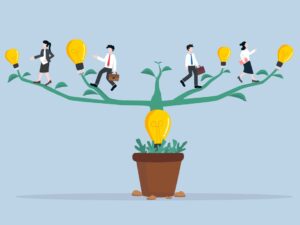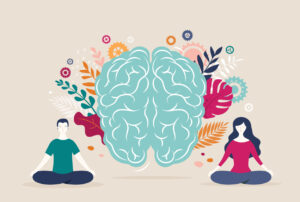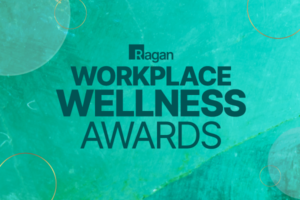Understanding wellness as a strategic imperative
Thrive Global’s David Hoke shares how changing expectations for workplace wellness drive growth.
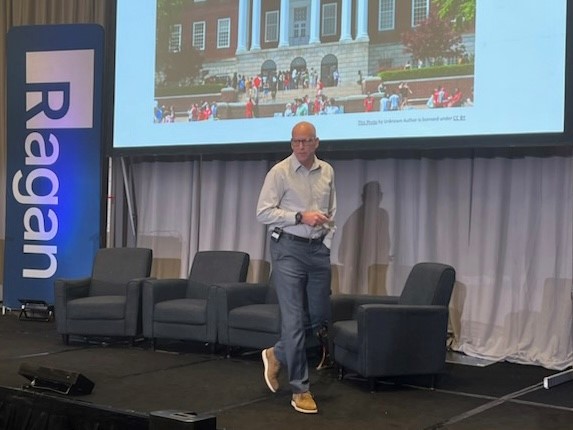
Kicking off his morning keynote at Ragan’s Employee Experience and Wellness Conference yesterday in Denver, Colorado, David Hoke, chief well-being officer at Thrive Global, told the audience that he sees nothing but potential and opportunity before him.
“When you’re of a certain generation, you love the opportunity to share all the things you screwed up,” Hocke said with a laugh, emphasizing his optimism over the strides that younger generations are making with implementing wellness at work, and will continue to make over the next several years.
“You all are in the weeds every day and you’re fighting for budget, you’re fighting for…the mental wellbeing of your people, you’re fighting for communication and engagement,” he continued. “And you’re so caught up in it that you maybe don’t see the progress that you’re making.”
Ultimately, Hocke’s inspiring examples underscore how workplace wellness is no longer a benefit, a program or a training, but a strategic imperative — the better we care for ourselves, the better our performance is. By the same hand, meeting new expectations for wellness will bring massive business growth to the leaders who are brave enough to figure it out.
Your future employees are today’s college students.
Hocke recalled bringing his daughter to orientation at Auburn. “What struck us was, all anybody talked ever talked about the entire time… were student retention and graduation rates. Everybody we talked to was talking about nothing but how they were there to support students when they were in class, when they were on campus, all these resources to help them be succesful.” This was the polar opposite of what Hocke experienced when he brought his oldest daughter to a different school a few years back when the tone was tougher, something more akin to “This isn’t 13th grade…not everyone is going to make it.”
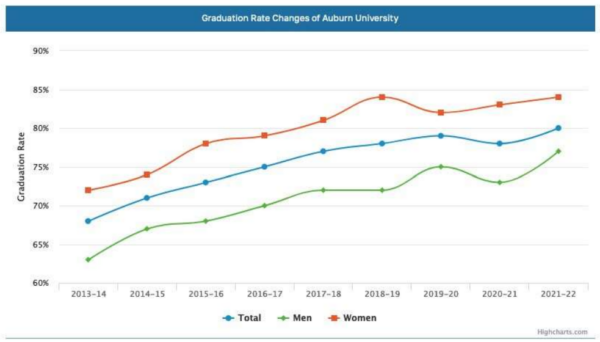
Hocke showed that Auburn’s shift in approach has increased graduation and retention rates. “What happens when you take someone who’s in this incredibly supportive environment where they have all the resources, everyone pulling for them, we drop them into a dog-eat-dog culture at work and ask them to suddenly figure out why they struggle,” he said. “Think about that as you’re hiring people. What are the types of future employees you have? And how is this going to influence the type of people experience you should create? From the time of recruiting to the time you bring them in, to the way you train your managers and leaders?
Whether you’re a communicator, an HR practitioner or an employee experience lead with a little bit of both disciplines, you’ll need to think about where your employees are coming from, who they are, what they’ve experienced and what they’re accustomed to. The flexibility you bring to work, manifesting in everything from the collaborative tools you offer to the environment you provide, will make all the difference.
Consumer demand drives workplace expectations.
Hocke shared research from McKinsey Consulting around something he calls “the well economy.” “The well economy is just where you and I choose to spend our discretionary money,” he said. “Every day, people are spending money on their wellbeing. The number one item being put into backyards right now is not swimming pools, it’s ice baths. Last year, it was saunas.”
This is important, he went on, because every time there is consumer demand, it will translate into workplace expectations. “That’s expectations, not demands,” he said.
Something similar happened when a burnt-out British Axe deodorant executive went to speak to Andy Puddicombe, a meditation and mindfulness teacher, and the two created the popular mindfulness app Headspace, which prominently features Puddicombe’s voice in its materials and resources.
“If it wasn’t for Axe causing a problem in England, we probably wouldn’t have Headspace today,” Hocke said.
Apply science to justify the resources needed for employee wellness initiatives
A 1907 expose of the steel industry highlighted the preponderance of worker deaths and injuries and became a watershed moment for labor — the moment when US Steel became the first company to implement workplace safety practices.
Work is still a leading cause of death in America. “What are we going to do, what is it incumbent on us to do, if we know that the way we’re operating today disproportionately impacts people’s physical and mental health,” asked Hocke, “and actually creates early death?”
The answer, he said, is by applying science. Consider the myriad of research that says mini breaks are an effective means of minimizing the impact that technology has on our mental health. “If you actually build into the workflow small moments of respite, as little as 60 seconds, you can help people avoid the impact of cumulative stress,” said Hocke. “At Thrive we like to say, ‘It’s not stress, it’s the enemy.’”
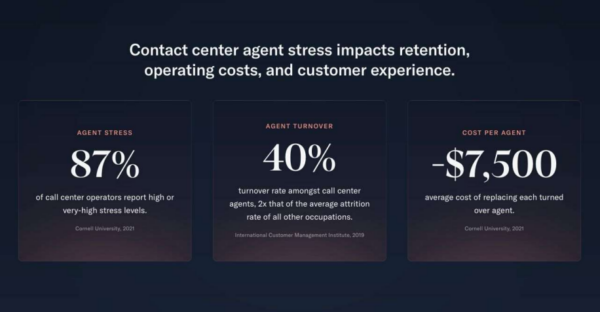
Hocke shared the above slide, illustrating the results of an initative that started when he was at Walmart and needed to contact the call centers. This is traditionally a hard employee cohort to reach, as they are always on the phone and seldom take time off. Hocke’s team took two centers, about 600 people each, looking at the data to determine what to measure to help people feel better at the height of the pandemic. They decided to test a 60-second meditation after every 10 calls, delivered directly to their headset.
“The outcomes were amazing,” said Hocke. “Handle time went down by 45 seconds for a call on average, which meant more x more calls per day were productive for the agents. Agents were happier, less turnover.” This has now been replicated many times over at other call centers that Thrive works with.




